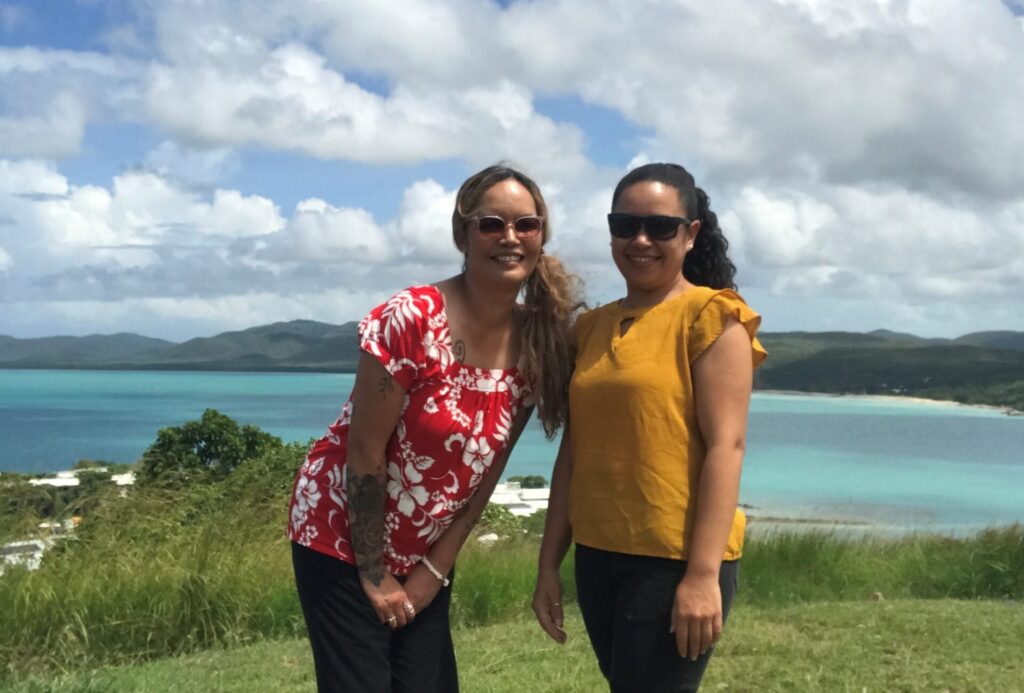“What this means is that our nurses will be on par – dollar for dollar – with their Australian counterparts . . .”
This is the claim made by Te Whatu Ora chief executive Margie Apa in a December media release about the decision to increase nursing pay rates in recognition of pay equity.
The statement included a link to a table showing rates for three Australian states alongside the New Zealand ones.
‘Like a lot of RNs, a considerable portion of my pay is supplemented by working ‘penalty’ shifts (ie nights and weekends), and penal rates are more favourable in Australia.’
Former minister of health Andrew Little and Minister of Health Ayesha Verrall have repeated the claim (and link) in their own media releases, saying the increases made Te Whatu Ora base rates “competitive” with Australia.
But Kiwi nurses in Australia and New Zealand Council of Trade Unions (NZCTU) economist Craig Renney say the comparison doesn’t stand up to scrutiny.
Kiwi RN Eve Sud, who works at a secondary hospital in Brisbane, said the rates provided by Te Whatu Ora only accounted for one component of pay, were not based on the same working hours per week, and relied on a Queensland pay scale that was two years out of date, she said.

“Like a lot of RNs, a considerable portion of my pay is supplemented by working ‘penalty’ shifts (ie nights and weekends), and penal rates are more favourable in Australia.”
In addition to this, a full-time equivalent role in Australia is based on 38hr/week, while for New Zealand it is 40hr/week, Sud said.
This meant the Australian salaries listed in the Te Whatu Ora table are for 1976 hours worked per year, while the Te Whatu Ora rates are for 2086 hours per year.
Sud is a grade 5, step 7 RN and her base pay rate under the Queensland Health agreement will increase from $99,090 (under the April 1, 2022 agreement) to $103,053 on April 1.
Te Whatu Ora used the October 2021 pay scale from the Queensland Health agreement, which had a salary of $95,278 for RNs on grade 5, step 7.
Sud said the use of the older rates was “disingenuous”.
“2021 was two years ago and the language that’s being used doesn’t reflect wages in real time.”
With just under 5000 New Zealand nurses having completed registration to work in Australia since August, a majority of those who spoke to Kaitiaki said higher pay was key to their decision.
Some Kiwi nurses working in Australia are working under state government collective agreements, but others are taking up short-term contracts which could double or even triple their New Zealand hourly rate.
‘2021 was two years ago and the language that’s being used doesn’t reflect wages in real time.’
Does the comparison stack up?
Te Whatu Ora provided a table (below), showing rates from New South Wales, Victoria and Queensland for registered nursing (RN), enrolled nursing (EN) and nursing assistants’ pay scales, alongside their own interim pay equity rates in the last column. There was no indication of currencies used.
| NSW ($AUD) |
QLD ($AUD) |
VIC ($AUD) |
Agreement in Principle PE Rates ($NZD) |
|
|---|---|---|---|---|
| Assistant in Nursing/Midwifery | ||||
| Year 1 Year 2 Year 3 Year 4+ |
$48,368 $49,906 $51,475 $53,066 |
1 $59,090 2 $60,308 3 $61,104 4 $62,486 5 $63,927 6 $64,699 |
1 $51,770 2 $55,011 3 $58,689 4 $59,748 5 $61,540 |
|
| Enrolled Nurse | ||||
| Year 1 Year 2 Year 3 Year 4 Year 5+ |
$60,663 $61,951 $63,270 $64,605 $65,914 |
1 $63,942 2 $64,858 3 $65,813 4 $66,802 5 $67,863 |
Different levels of EN Certification | 1 $61,146 2 $63,980 3 $68,990 4 $71,300 5 $73,609 |
| Registered Nurse/Midwife | Re-entry $70,963 | |||
| Year 1 Year 2 Year 3 Year 4 Year 5 Year 6 Year 7 Year 8+ |
$67,311 $70,961 $74,627 $78,553 $82,454 $86,333 $90,776 $94,504 |
1 $74,281 2 $77,775 3 $81,271 4 $84,761 5 $88,268 6 $91,777 7 $95,278 |
1 $67,713 2 $71,530 3 $75,341 4 $79,429 5 $83,491 6 $87,444 7 $91,391 8 $95,640 |
1 $66,570 2 $72,064 3 $76,554 4 $80,883 5 $89,868 6 $92,563 7 $95,340 |
Te Whatu Ora provided links to the source information for the table to Kaitiaki: the Queensland Health Agreement, October 2021 nursing rates; the Public Health System Nurses’ and Midwives’ (NSW State) Award, 2022; and the Nurses and Midwives Agreement 2020-2024 (Victoria).
Asked how the comparison of pay was undertaken, to ensure fairness, Te Whatu Ora director of employment relations Gretchen Dean acknowledged it “can be complicated”.
‘At the end of the week, there is clear evidence that someone believes your education, skill and knowledge and time is worth paying for.’
“We acknowledge that international comparisons can be complicated, as there will be factors specific to individual jurisdictions . . . , interpretation and application of industrial documents, and the legal framework . . . .”
But she said the mutual recognition arrangements for nurse registrations” supports an apples-with-apples comparison of the base roles”.
Dean said the October 2021 Queensland Health rates were “contemporary” with the Te Whatu Ora interim pay equity rates – which were agreed in December 2021.
Salaries in the table were in local currencies – New Zealand rates are in New Zealand dollars (NZD) and Australian rates are in Australian dollars (AUD), Dean said.
“The OECD’s purchasing power parity (PPP) measures show this assumption is reasonable – an NZ$ salary in NZ is roughly equivalent to an A$ salary in Australia.”
The PPP indicator – national currency per US dollar – shows New Zealand on $1.46 and Australia on $1.44.

However, Renney said the use of local currencies meant the rates did not “translate equally” as currently $1NZD buys 92c in Australia.
“A year 1 EN would be paid NZ$61,146 under this deal [the interim pay equity adjusted rates]. That would equate to AU$56,254 – well below the rate of AU$63,942 being paid in Queensland.
“When you factor in the higher cost of living in New Zealand that makes the difference even larger.”
Renney said the comparison by Te Whatu Ora “doesn’t really hold up to much scrutiny”.
Ratios increase job satisfaction
Kiwi nurses in Australia who spoke to Kaitiaki said mandated nurse-to-patient ratios made the job more satisfying.
Mandatory nurse-to-patient ratios are legislated in Queensland and Victoria, with NSW, ACT and South Australia committed to bringing them in.
RN Becky Malone, who has worked in Victoria and South Australia, said a ratio of one nurse per three patients was in place for the emergency department (ED) in Ballarat.

“In Australia, I feel like you have enough time to actually be a nurse.”
Renney said better staffed and resourced workplaces were among many other compelling reasons nurses chose to work overseas, apart from the pay.
“It may well be that wards are better staffed and resourced in Australia, making work less exhausting and making it easier to provide quality care.
“The cost of living is higher in New Zealand than in Australia – housing, food, and fuel is cheaper [in Australia]. That makes the same amount of ‘wage’ go further.
Māori mental health nurse takes her experience to Australia
Lisa Silk, 50, speaks to Kaitiaki from her temporary home on Thursday Island, one of at least 274 islands that form the Torres Strait Islands, and are home to the indigenous Torres Strait Islanders.
It’s the last week of a five-week contract in a mental health outreach programme for Silk, who is paid about $2200 per week, along with free accommodation and flights from her home in Christchurch to and from each contract site.

The experienced Māori mental health nurse left a role at Christchurch’s specialist mental health service based at Hillmorton Hospital to take up contract nursing in Australia in late 2019 as a way to get ahead financially.
“If the pay was a lot different back home, I would prefer to deliver health to the people of New Zealand. I am Māori, and I would love that, but I felt really stuck and in a financial struggle-street.”
From her base on Thursday Island, Silk spends time visiting patients on about 20 outer islands, who are over 90 per cent Melanesian (indigenous Torres Strait Islander).
Silk decided to pursue mental health nursing after watching her mother receive treatment that she felt wasn’t respectful of her, and her Māori culture.
“There are a lot of things that I personally wanted to see, just to make it safer, or to make it feel like it’s OK to receive health from a face that looks a bit like yours, and being able to walk alongside someone.”
In Australia, Silk said she felt her expertise and identity as an indigenous person was more respected and she was “better thought of” by colleagues.

“I don’t come with the same set of stigmas as I feel like I do when I walk into rooms in New Zealand as a Māori nurse.”
She said in a New Zealand service, where staff did not wear a uniform, other clinicians had mistaken her for a patient, and one even told her where the waiting room was.
“For whatever reason, that doesn’t happen for me here and I feel like I get a fairer chance, clinically.”
The higher pay she received in Australia showed that her skills were respected and valued, Silk said.
“At the end of the week, there is clear evidence that someone believes your education, skill and knowledge and time is worth paying for.”
Silk said she found it “interesting” that Te Whatu Ora had only included rates from three Australian states for their comparison with their increased rates.
“I didn’t think it was a very fair representation.”
Primary health care nurses leaving too
Primary health care nurses – who did not benefit from the Te Whatu Ora interim pay equity decision – are also leaving Aotearoa for work in Australia.
Those prepared to take up short-term contracts in rural and remote areas of Australia can double and even triple their New Zealand hourly rate.
Malone is one of nine nurses to have left Riccarton Clinic and After Hours, Christchurch, for work in Australia, in the last year.
The RN, who has been nursing for just over two years, is on her second short-term contract in Ceduna, South Australia, a remote coastal town of about 2000 people, where she fills a sole emergency department nurse role.
At Riccarton Clinic, Malone was paid $29 (NZD) per hour, as a base rate*. and she and her partner were struggling to make mortgage repayments on a new house.
“It was not really enough to keep up with the cost of living.”
For her first role in Ballarat, Victoria, she was offered about $60 per hour, flights and accommodation.
In Ceduna, Malone’s base rate is $72.50 (AUD) per hour, and $140 (AUD) per hour on Sundays, plus 10 per cent superannuation.
It was not easy to live apart from her partner, family and friends, but was “financially necessary”, Malone said.
* An earlier version of this story did not make clear Malone’s pay of $29 per hour was the base rate, excluding additional paid meal breaks.



